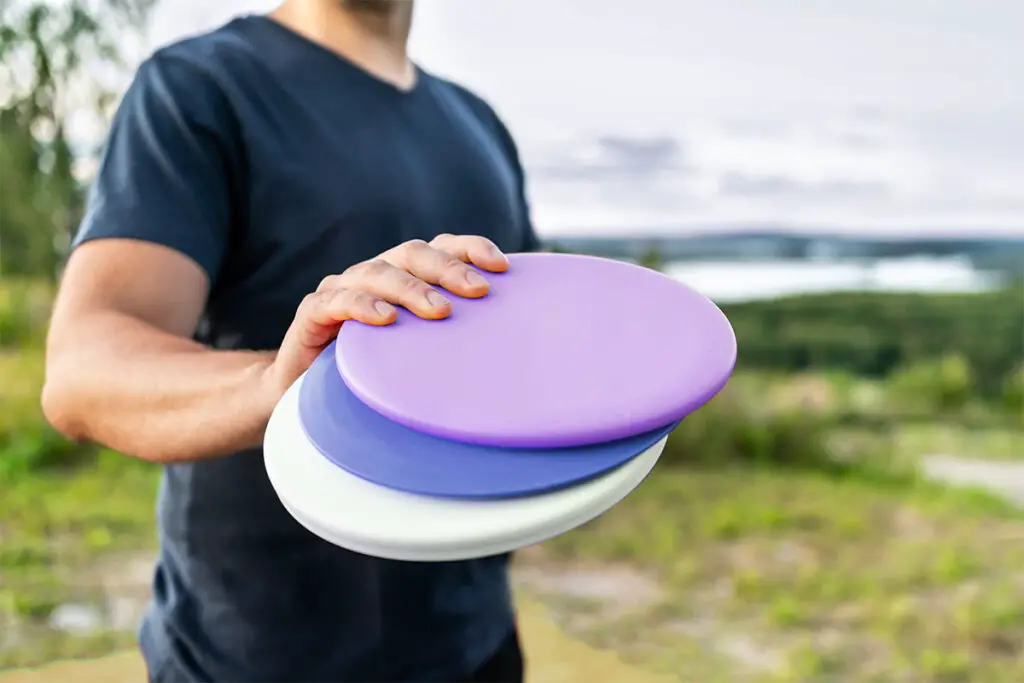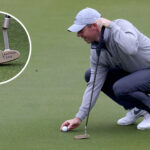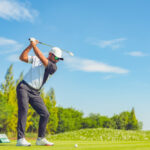Disc golf is a popular sport that combines the accessibility of traditional golf with the casual vibe of a frisbee game. If you’re new to disc golf, learning how to properly throw a golf disc is the first step to enjoying this fun and engaging outdoor activity. Here’s a beginner’s guide to help you get started.
Understanding Disc Types
Before you throw, it’s important to know what kind of disc you’re using. There are three main types of discs in disc golf: drivers, mid-range discs, and putters. Each type is designed for specific distances and throwing techniques:
Drivers are used for long-distance throws and have sharper edges to cut through the air.
Mid-range discs have a more rounded edge and are used for a variety of shots, offering more control than drivers.
Putters are used for short distances and have the thickest edges, providing the highest accuracy.
The Basic Grip
The way you grip your disc is crucial for control and accuracy. There are several grips to choose from, but beginners might find the backhand grip the easiest:
Backhand Grip: Hold the disc with your thumb on top and your fingers underneath, spreading them across the bottom of the disc. Ensure your grip is firm but comfortable.
Stance and Posture
Your stance plays a vital role in the power and accuracy of your throw:
Stance: Stand with your feet shoulder-width apart, with your lead foot slightly forward.
Posture: Keep your back straight and bend your knees slightly. Balance your weight between both feet and prepare to shift it as you move through the throw.
- The Throwing Motion
Throwing a disc golf disc involves a smooth, controlled motion:
Reach Back: Start by facing sideways relative to your target. Reach back with the disc, extending your throwing arm fully. This action should feel similar to pulling back a bowstring.
Pull Through: Swing your arm forward in a straight line towards the target, keeping the disc at waist level. Focus on maintaining a flat trajectory for the disc.
Release: Release the disc when it reaches the front of your body. Your wrist should snap naturally as the disc leaves your hand, adding spin and speed to the flight.
Follow Through
Your throw isn’t complete without a proper follow-through:
Continue moving your arm in the direction of the throw even after the disc has left your hand.
Rotate your body toward the target, and allow your back foot to pivot for balance and power.
Practice Makes Perfect
Like any sport, proficiency in disc golf comes with practice. Spend time working on your grip, stance, and throwing techniques. Try different discs to understand how each behaves in flight. Most importantly, observe more experienced players and learn from their techniques.
Playing with Others
Disc golf is often more enjoyable when played with friends. Joining a local club or playing casual rounds with others can also offer opportunities to learn through observation and advice.
Throwing a golf disc correctly is the foundation of a rewarding disc golf experience. By understanding the different types of discs, mastering the grip, and practicing your throwing technique, you’ll not only improve your game but also enjoy the numerous benefits of this engaging sport. Remember, every master was once a beginner, so grab a disc, head to your nearest course, and start throwing!
Adjusting for Wind and Environment
When playing disc golf, environmental factors like wind can significantly affect the flight of your disc. Here are some tips on how to adjust your throws:
Headwind: Use a heavier and more stable disc. Throw with more power and a slight angle to prevent the disc from lifting too high and veering off course.
Tailwind: Choose a lighter disc. You can throw it with less power, as the wind will help carry it further. Keep the disc at a lower angle to maximize distance.
Crosswind: Adjust the angle of your disc to compensate for the wind. If the wind is coming from the left, tilt the left edge of the disc up slightly, and vice versa.
Learning Different Throwing Techniques
As you become more comfortable with the basic backhand throw, you can begin to explore other techniques that can be useful in different situations on the course:
Forehand Throw (Sidearm): This throw mimics a sidearm throw in baseball. It’s useful for shots that need to curve to the right (for right-handed throwers) and can be easier on the body over long games.
Overhead Throws (Tomahawk and Thumber): These are useful for getting over obstacles. The disc is thrown vertically and over the head, flipping end over end or spinning like a helicopter blade.
Roller Throws: These involve throwing the disc in a way that it lands on its edge and rolls along the ground. This can be particularly effective in windy conditions or to navigate through trees.
Utilizing Course Features
Each disc golf course has unique features that can be used to your advantage or present challenges. Here are a few strategies:
Elevation Changes: Throwing uphill requires more power and a higher angle, whereas downhill throws require control and a lower release point to avoid overshooting the basket.
Obstacles: Use the environment to shape your throws. Trees or bushes can be used to block the wind or create safe landing zones away from hazards.
Keeping Score and Understanding Rules
Understanding how to keep score and the basic rules will help you enjoy the game more fully and compete fairly. Each throw counts as a stroke, and the goal is to complete the course with the fewest strokes possible. Penalties are given for out-of-bounds throws and other infractions, so familiarizing yourself with course-specific rules is crucial.
Disc golf is not just about physical skill; it’s also about sportsmanship. Here are some general etiquette guidelines:
Respect the Order: The player with the lowest score on the previous hole typically throws first on the next hole.
Stay Quiet and Still: When someone is throwing, remain still and silent.
Take Care of the Course: Don’t leave trash, and try to minimize damage to plants and the natural environment.
Mastering disc golf requires practice, patience, and a willingness to learn from every throw. By understanding the mechanics of different throws, adjusting to environmental conditions, and respecting the game and its players, you’ll not only become a better player but also contribute to the vibrant and growing community of disc golfers. So, keep practicing, stay positive, and enjoy the journey of improving your game!
Adjusting for Wind and Environment
When playing disc golf, environmental factors like wind can significantly affect the flight of your disc. Here are some tips on how to adjust your throws:
Headwind: Use a heavier and more stable disc. Throw with more power and a slight angle to prevent the disc from lifting too high and veering off course.
Tailwind: Choose a lighter disc. You can throw it with less power, as the wind will help carry it further. Keep the disc at a lower angle to maximize distance.
Crosswind: Adjust the angle of your disc to compensate for the wind. If the wind is coming from the left, tilt the left edge of the disc up slightly, and vice versa.
As you become more comfortable with the basic backhand throw, you can begin to explore other techniques that can be useful in different situations on the course:
Forehand Throw (Sidearm): This throw mimics a sidearm throw in baseball. It’s useful for shots that need to curve to the right (for right-handed throwers) and can be easier on the body over long games.
Overhead Throws (Tomahawk and Thumber): These are useful for getting over obstacles. The disc is thrown vertically and over the head, flipping end over end or spinning like a helicopter blade.
Roller Throws: These involve throwing the disc in a way that it lands on its edge and rolls along the ground. This can be particularly effective in windy conditions or to navigate through trees.
Utilizing Course Features
Each disc golf course has unique features that can be used to your advantage or present challenges. Here are a few strategies:
Elevation Changes: Throwing uphill requires more power and a higher angle, whereas downhill throws require control and a lower release point to avoid overshooting the basket.
Obstacles: Use the environment to shape your throws. Trees or bushes can be used to block the wind or create safe landing zones away from hazards.
Keeping Score and Understanding Rules
Understanding how to keep score and the basic rules will help you enjoy the game more fully and compete fairly. Each throw counts as a stroke, and the goal is to complete the course with the fewest strokes possible. Penalties are given for out-of-bounds throws and other infractions, so familiarizing yourself with course-specific rules is crucial.
Etiquette and Sportsmanship
Disc golf is not just about physical skill; it’s also about sportsmanship. Here are some general etiquette guidelines:
Respect the Order: The player with the lowest score on the previous hole typically throws first on the next hole.
Stay Quiet and Still: When someone is throwing, remain still and silent.
Take Care of the Course: Don’t leave trash, and try to minimize damage to plants and the natural environment.
Mastering disc golf requires practice, patience, and a willingness to learn from every throw. By understanding the mechanics of different throws, adjusting to environmental conditions, and respecting the game and its players, you’ll not only become a better player but also contribute to the vibrant and growing community of disc golfers. So, keep practicing, stay positive, and enjoy the journey of improving your game!







